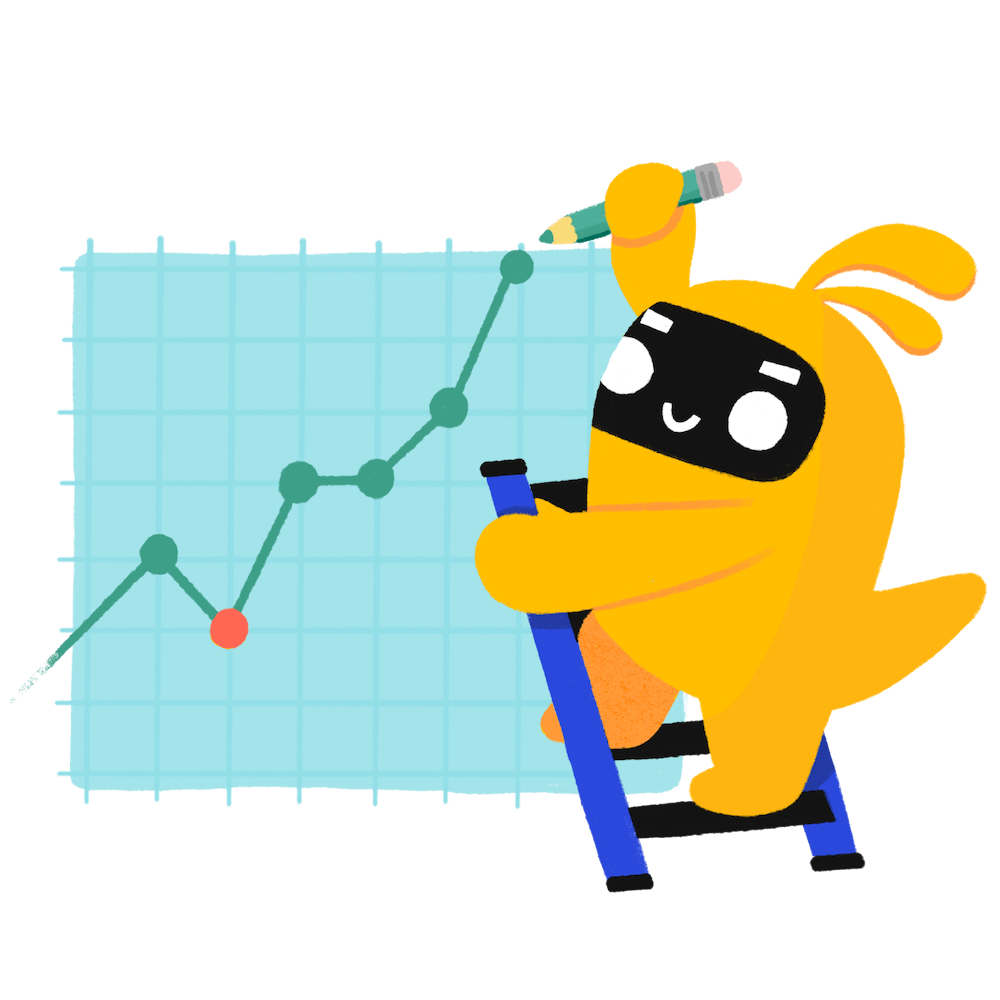1 customisable OKR examples for React Native Application
What are React Native Application OKRs?
The Objective and Key Results (OKR) framework is a simple goal-setting methodology that was introduced at Intel by Andy Grove in the 70s. It became popular after John Doerr introduced it to Google in the 90s, and it's now used by teams of all sizes to set and track ambitious goals at scale.
Formulating strong OKRs can be a complex endeavor, particularly for first-timers. Prioritizing outcomes over projects is crucial when developing your plans.
We've tailored a list of OKRs examples for React Native Application to help you. You can look at any of the templates below to get some inspiration for your own goals.
If you want to learn more about the framework, you can read our OKR guide online.
Building your own React Native Application OKRs with AI
While we have some examples available, it's likely that you'll have specific scenarios that aren't covered here. You can use our free AI generator below or our more complete goal-setting system to generate your own OKRs.
Feel free to explore our tools:
- Use our free OKR generator
- Use Tability, a complete platform to set and track OKRs and initiatives, including a GPT-4 powered goal generator
Our customisable React Native Application OKRs examples
You'll find below a list of Objectives and Key Results templates for React Native Application. We also included strategic projects for each template to make it easier to understand the difference between key results and projects.
Hope you'll find this helpful!
1. OKRs to launch a fully functional React Native application
Launch a fully functional React Native application
Publish the application on relevant platforms (e.g., App Store, Google Play) and achieve a high user rating and positive feedback
Implement necessary features and functionalities such as authentication, data storage, and push notifications
Set up a secure and scalable data storage solution for storing user data
Research and choose an authentication method suitable for the project requirements
Test and validate all implemented features and ensure smooth functionality before deployment
Integrate push notification service to deliver real-time updates and improve user engagement
Conduct thorough and successful testing to ensure the application is robust and bug-free
Collaborate with developers to resolve bugs promptly and retest fixed components
Create a comprehensive test plan with clear objectives and test cases
Conduct regression testing to ensure stability and functionality after bug fixes
Execute test cases meticulously and document any bugs or issues discovered
Develop and deliver a user-friendly and visually appealing interface for the application
Conduct user testing to ensure the interface is intuitive and visually appealing
Conduct user research to identify design preferences and pain points
Collaborate with UX/UI designers to refine and enhance the visual elements
Create wireframes and prototypes to visualize the interface design
React Native Application OKR best practices to boost success
Generally speaking, your objectives should be ambitious yet achievable, and your key results should be measurable and time-bound (using the SMART framework can be helpful). It is also recommended to list strategic initiatives under your key results, as it'll help you avoid the common mistake of listing projects in your KRs.
Here are a couple of best practices extracted from our OKR implementation guide 👇
Tip #1: Limit the number of key results
The #1 role of OKRs is to help you and your team focus on what really matters. Business-as-usual activities will still be happening, but you do not need to track your entire roadmap in the OKRs.
We recommend having 3-4 objectives, and 3-4 key results per objective. A platform like Tability can run audits on your data to help you identify the plans that have too many goals.
 Tability's audit dashboard will highlight opportunities to improve OKRs
Tability's audit dashboard will highlight opportunities to improve OKRsTip #2: Commit to weekly OKR check-ins
Don't fall into the set-and-forget trap. It is important to adopt a weekly check-in process to get the full value of your OKRs and make your strategy agile – otherwise this is nothing more than a reporting exercise.
Being able to see trends for your key results will also keep yourself honest.
 Tability's check-ins will save you hours and increase transparency
Tability's check-ins will save you hours and increase transparencyTip #3: No more than 2 yellow statuses in a row
Yes, this is another tip for goal-tracking instead of goal-setting (but you'll get plenty of OKR examples above). But, once you have your goals defined, it will be your ability to keep the right sense of urgency that will make the difference.
As a rule of thumb, it's best to avoid having more than 2 yellow/at risk statuses in a row.
Make a call on the 3rd update. You should be either back on track, or off track. This sounds harsh but it's the best way to signal risks early enough to fix things.
How to turn your React Native Application OKRs in a strategy map
Quarterly OKRs should have weekly updates to get all the benefits from the framework. Reviewing progress periodically has several advantages:
- It brings the goals back to the top of the mind
- It will highlight poorly set OKRs
- It will surface execution risks
- It improves transparency and accountability
Spreadsheets are enough to get started. Then, once you need to scale you can use a proper OKR platform to make things easier.
 Tability's Strategy Map makes it easy to see all your org's OKRs
Tability's Strategy Map makes it easy to see all your org's OKRsIf you're not yet set on a tool, you can check out the 5 best OKR tracking templates guide to find the best way to monitor progress during the quarter.
More React Native Application OKR templates
We have more templates to help you draft your team goals and OKRs.
OKRs to boost profitability via disciplined revenue and expense management
OKRs to simplify API architecture and retire outdated assets
OKRs to boost team engagement and cultivate a positive work environment
OKRs to enhance technical performance and usability of the website
OKRs to maximize revenue from current business operations
OKRs to amplify sales of IT services and staff augmentation
OKRs resources
Here are a list of resources to help you adopt the Objectives and Key Results framework.
- To learn: What is the meaning of OKRs
- Blog posts: ODT Blog
- Success metrics: KPIs examples
Create more examples in our app
You can use Tability to create OKRs with AI – and keep yourself accountable 👀
Tability is a unique goal-tracking platform built to save hours at work and help teams stay on top of their goals.
 1 Create your workspace
1 Create your workspace 2 Build plans in seconds with AI
2 Build plans in seconds with AI 3Track your progress
3Track your progress